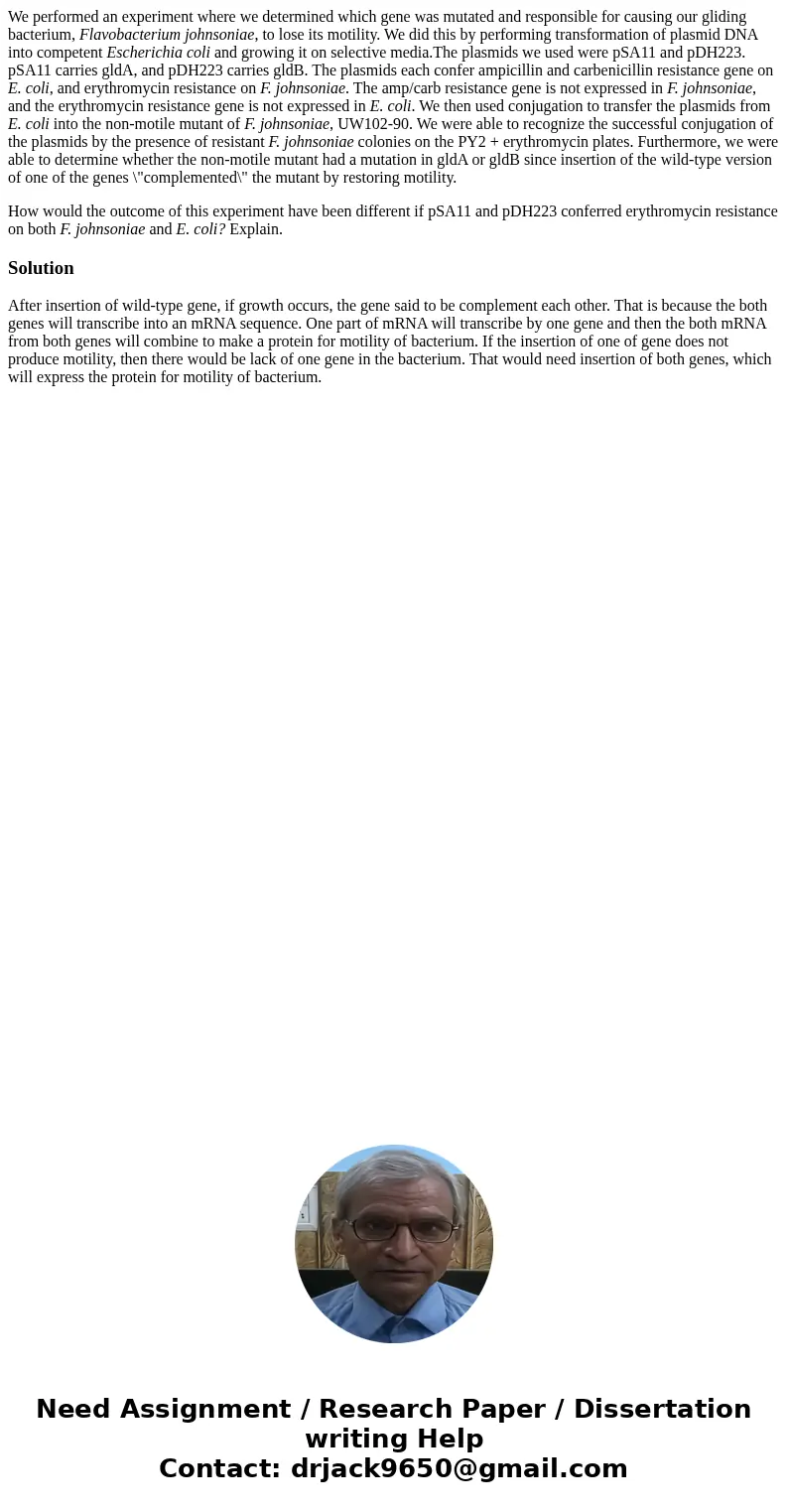We performed an experiment where we determined which gene wa
We performed an experiment where we determined which gene was mutated and responsible for causing our gliding bacterium, Flavobacterium johnsoniae, to lose its motility. We did this by performing transformation of plasmid DNA into competent Escherichia coli and growing it on selective media.The plasmids we used were pSA11 and pDH223. pSA11 carries gldA, and pDH223 carries gldB. The plasmids each confer ampicillin and carbenicillin resistance gene on E. coli, and erythromycin resistance on F. johnsoniae. The amp/carb resistance gene is not expressed in F. johnsoniae, and the erythromycin resistance gene is not expressed in E. coli. We then used conjugation to transfer the plasmids from E. coli into the non-motile mutant of F. johnsoniae, UW102-90. We were able to recognize the successful conjugation of the plasmids by the presence of resistant F. johnsoniae colonies on the PY2 + erythromycin plates. Furthermore, we were able to determine whether the non-motile mutant had a mutation in gldA or gldB since insertion of the wild-type version of one of the genes \"complemented\" the mutant by restoring motility.
How would the outcome of this experiment have been different if pSA11 and pDH223 conferred erythromycin resistance on both F. johnsoniae and E. coli? Explain.
Solution
After insertion of wild-type gene, if growth occurs, the gene said to be complement each other. That is because the both genes will transcribe into an mRNA sequence. One part of mRNA will transcribe by one gene and then the both mRNA from both genes will combine to make a protein for motility of bacterium. If the insertion of one of gene does not produce motility, then there would be lack of one gene in the bacterium. That would need insertion of both genes, which will express the protein for motility of bacterium.

 Homework Sourse
Homework Sourse